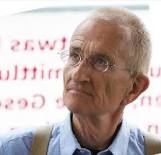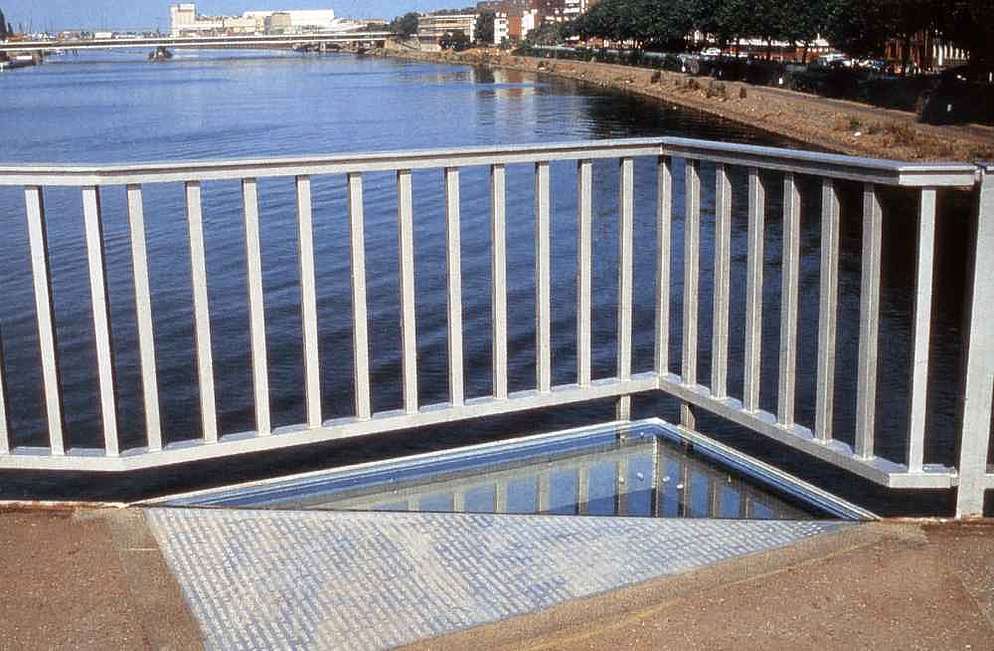
The Roland Prize for Public Art 1990 goes to Jochen Gerz who was born 1940 in Berlin and lives in Paris.
»The jury has honoured him for the ‚Harburg Memorial against Fascism, War, Violence’ he developed together with his wife Esther Gerz and that was created in 1986. The memorial is a 12 metres high lead-coated column onto which passers-by can sign by means of four steel pens. The column is going to be lowered in proportion with the growing number of signatures until it will have disappeared in the earth; accordingly, states the conclusion of the artistic concept ‚’nothing can represent us permanently in our fight against injustice’.
With this work the jury honours an originary project for art in the public space that by reflecting the classical memorial indicates its questionability, that does not intend to integrate itself aesthetically into its environment in order to neutralise remembering into a formal act; but comprehends reminder and remembrance as a social process. The more participate in it, the more obsolete does the monument become. Finally, it has to disappear.
The jury regards this first work in public space created by Jochen Gerz and his wife to be in a close context with the topics of his complete work and a consequent continuation of installations such as ‚Exit/Materials to the Dachau-Project’ of 1987. Topic is the remembrance that is prevented and buried by the daily image and language output of the media. With his art Jochen Gerz tries to work against the daily cultural work of excluding and obliterating, against a conception of culture that is comparing its achievements with its images and ideologies.«
(Laudation of the jury 1990)
Jochen Gerz realises the project 1990 – 1995
“The Bremen Questionnaire – SINE SOMNO NIHIL«

Jochen Gerz arbeitete über vier Jahre hinweg mit ausgewählten Bevölkerungsgruppen. Er verschickte 50.000 Fragebögen in denen er danach fragte, welche Themen eine künstlerische Arbeit für Bremen haben sollte, ob die Kunst solchen Themen gerecht werden kann und wer an dieser Arbeit mitwirken möchte. 269 Bremerinnen und Bremer haben geantwortet und mit ihm diskutiert. Die Befragung war für Gerz kein Mittel zum Zweck, sondern das Kunstwerk selbst, das er als “immaterielle Skulptur” bezeichnete. Es sollte über die Diskussionen in den Köpfen der Menschen entstehen. Den Diskurs in Bremen veröffentlichte er in der Schrift “Die Bremer Befragung. The Bremen Questionaire. Sine Somno Nihil, 1990 – 1995”, Herausgeber: Peter Friese, Weserburg. Museum für moderne Kunst, Autor: Jochen Gerz, 1995.
Gleichzeitig gravierte der Künstler als Zeichen und öffentliche Erinnerung die Namen der Teilnehmerinnen und Teilnehmer in eine gläserne Bodenplatte (200 cm x 116 cm ), die am Boden des Brückengeländers der Bürgermeister Smidt Brücke aufgebracht ist. In die Bodenplatte ist der Text eingearbeitet: “Die Bremer Befragung ist eine Skulptur. Sie besteht aus den Bildern und Träumen derer, die sie sich vorstellen. Alle, die dies tun, sind ihre Autoren. Die Bremer Befragung ist ihren Autoren gewidmet und allen, die hier stehen bleiben und etwas sehen, was es nicht gibt.”
